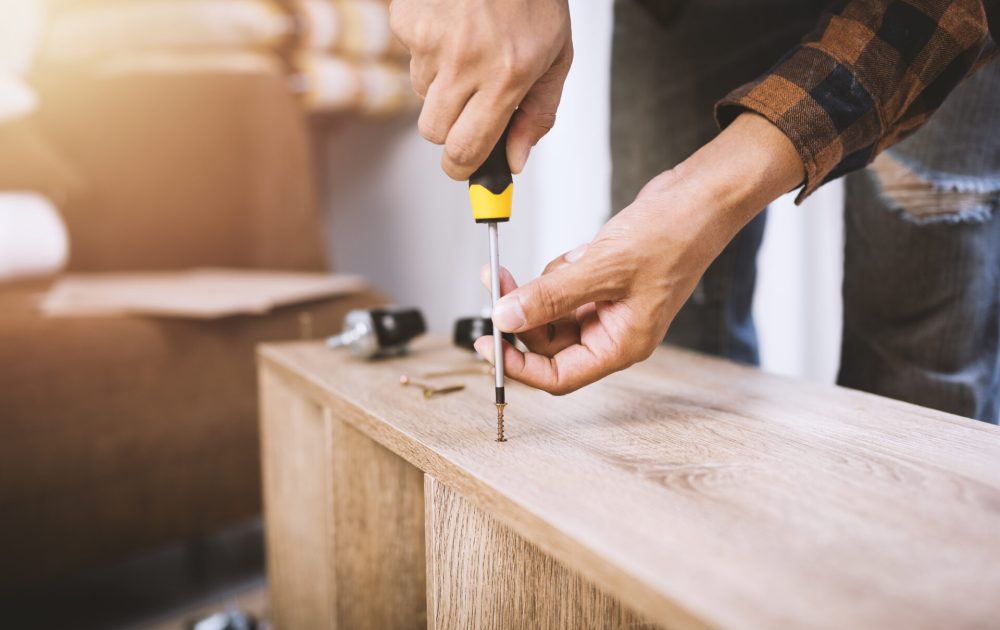Our test tells you which everyday chemicals you've recently come into contact with, and easy steps you can follow to reduce your exposure to them.
Can chemicals lurk in your furniture?

Spring is a perfect time to think about updates to your home – your furniture and carpets, and a splash of paint to add colour to your walls. But before choosing, it’s worth thinking how products are manufactured, and the chemicals used to achieve features such as stain and water resistance, and affordability. In this first article we’ll focus on furniture and some of the considerations about how they’re made to help you decide between MDF and wood furniture items.
Choosing your furniture – is MDF OK?
Choosing new furniture can be a costly exercise which is why furniture made from MDF (medium-density fibreboard) is so popular. MDF is a manufactured wood product used for its economical price. But MDF production relies on varying levels of formaldehyde, a chemical used mostly in the glues that bond the layers of wood together. Although present at low levels, formaldehyde has given rise to serious health concerns for anyone exposed to it, which is why it’s classified as a cancer causing chemical in humans by the International Agency for Research on Cancer (IARC).
Should you be concerned about formaldehyde in MDF furniture?
As the world’s largest supplier of MDF based furniture IKEA still uses formaldehyde in the manufacturing process for MDF, albeit it at varying levels. IKEA state they have ‘a long history of continuously lowering the formaldehyde emission levels from wood-based boards and we are progressing toward reaching formaldehyde emission levels from wood-based materials that are equal to, or lower than, levels emitted by natural wood.’ So whilst the world’s leading MDF furniture manufacturer is taking steps to reduce its reliance on formaldehyde, it’s still being used in some aspects of the manufacturing processes.
Many furniture products use a mixture of MDF and particle board, where the latter requires less glue to produce, making it cheaper and less reliant on formaldehyde. It’s worth remembering that natural wood also releases formaldehyde at low levels, but MDF furniture has higher levels. The level of formaldehyde emitted when MDF is in your home will vary depending on usage. Wood veneers may also have detectable levels of chemicals. For example, finishes on MDF board are usually formaldehyde free, but most laminates are paper based and use polyurethane and polypropylene.
What these chemicals have in common is that they are all emitted from MDF furniture when it reaches your home in a process known as offgassing.
What is offgassing?
Thousands of new household products release some of the chemicals used during manufacture into ambient indoor air. You might recognise it as the ‘new’ smell of self-assembly furniture, bed mattresses, carpets, paints, glues and sealants, kitchen units, and electrical items. These various smells are the result of a process known as offgassing where the chemicals used during the manufacturing process of the product are released into indoor air in your home. These chemicals can cause mild symptoms such as headaches, but some represent a higher risk to our health. Formaldehyde has been classified as a cancer causing chemical in humans by the International Agency for Research on Cancer (IARC).
How to reduce your exposure
Firstly, if you have any concerns about the safety of chemicals used in the production of furniture, contact the manufacturer for more information. Allow all new items coming into your home to release some of the chemical gasses before you start to use them. Leave furniture in a well-ventilated room for as long as possible where the chemicals can release and escape (offgas) into ambient air, and leave your windows open whenever possible. You could also consider installing an air purifier that removes formaldehyde and other chemical substances from your indoor air.
Where possible, choose furniture made from natural materials. Alternatively consider upcycled furniture where it’s more likely that chemicals will have already been released.
Image credit Nor Gal